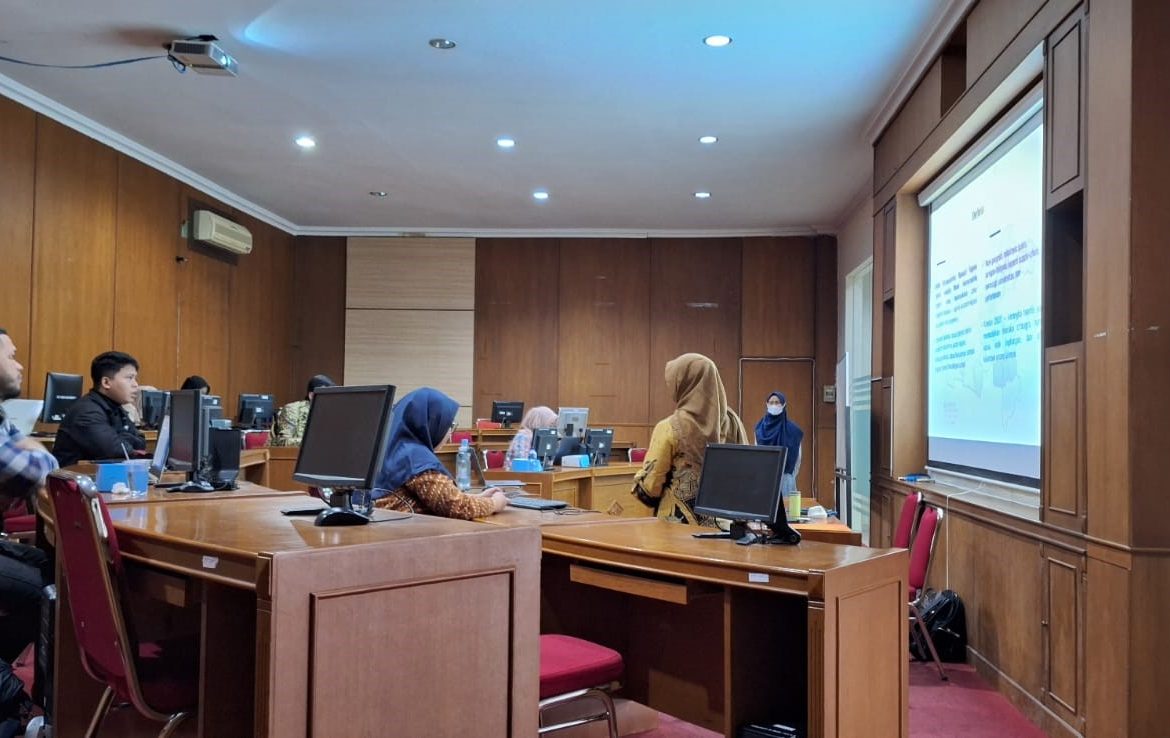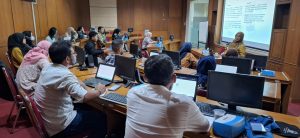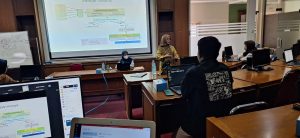
MESP Study Program Hosted a Spatial Econometrics Workshop
The Master in Economics and Development Studies Study Program, Faculty of Economics and Business (FEB) Universitas Sebelas Maret (UNS), hosted another workshop this week.
 A Workshop on Stata for Spatial Econometrics was hosted to support student learning, by inviting Dr. Dyah Maya Nihayah, SE, M.Si., the Chairman of the Quality Assurance Division of Universitas Negeri Semarang. The workshop was conducted on Saturday, June 24, 2023, in Teleconference Room Bachtiar Effendi Building FEB UNS and Zoom Meeting.
A Workshop on Stata for Spatial Econometrics was hosted to support student learning, by inviting Dr. Dyah Maya Nihayah, SE, M.Si., the Chairman of the Quality Assurance Division of Universitas Negeri Semarang. The workshop was conducted on Saturday, June 24, 2023, in Teleconference Room Bachtiar Effendi Building FEB UNS and Zoom Meeting.
In front of a number of MESP students, Dr. Dyah explained Spatial Econometrics in detail. Spatial econometrics is a combination of econometrics and spatial (space), which means the econometric models (regression) that include an abundance of spatial elements in the form of spatial autocorrelation and spatial heterogeneity.
Spatial econometrics can only be used for cross-section data and panel data. Examples of these data are in the form of geography data between countries, districts/cities, villages, and housing data. These data usually can be found in the form of the PODES and SUSENAS data, while non-geography data are available such as supply chains, technology, universities, and friendships.
According to Anselin (2001), spatial econometrics is a theoretical framework that models strategic interactions, social norms, the environment, and other equivalent group effects. The first stage of spatial econometrics analysis determines the weighting matrix used as a carrier of the spill-over effect, which is divided into a contiguity matrix and an inverse-distance matrix.
Then a spatial dependency test is carried out (to determine whether data analysis will be carried out with spatial or non-spatial regression) and the model assumption test is selected, whether to use SLM, SLXM, and SEM. The SLM (Spatial Lag Model) is a model in which variables are dependent on dependent variables observed in neighboring units and on a set of observed local characteristics. SLXM (Spatial Lag X Model) is a model in which dependent variables in a location are related to independent variables in other neighboring or local units. SEM (Spatial Error Model) is a spatial model in which dependent variables depend on a set of observed local characteristics and error terms correlated across space.

